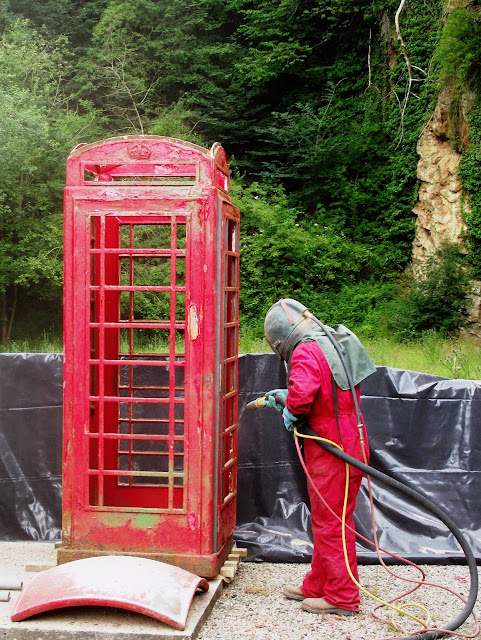
Snailbeach was Shropshire's largest lead mine, and reputed to have the highest per acre yield of any lead mine in Europe. In addition to galena were mined barytes, calcite, fluorspar, and zinc. Its oldest parts are Roman - a 193lb Roman ingot was found in 1796 - but large scale mining commenced in the 18th-century.

The Snailbeach Company was formed in 1783. A colliery was operated between nearby Pontesford and Pontesbury, and fed a smelt mill in Pontesford that processed the galena. There are substantial surface remains, many of them clustered around George's Shaft (which descended 750 feet) at the mine site, including a blacksmith's (below).

The workings down to 336 feet were drained by an adit driven from the Hope Valley. Those below, and they eventually reached 1,650 feet, were pumped out to adit level, from 1858 by a Bolton and Watt beam engine - as much as 5,000 gallons of water per hour. Pumping ceased in 1911, and the mine is flooded up to the 112 yard level.

In 1863 the original smelt works was abandoned. A new works was built nearer the mine, a flue running up to the chimney at Resting House. Condensed lead fumes were counted as stock. A good indication of the degree of pollution at the time: in 1872 35 tons of lead were estimated to be in the flue.

Black Tom Shaft, 120 feet, was sunk in the 1820s. The ropes from the winding gear to the headgear scored the shutters of the winding gear's shed (above). A compressor house (top and below) was built near George's Shaft in 1881, enabling the use of powered rock drills.

The new smelting mill was closed in 1895. From about 1900 the spoil tips and upper levels were worked by various companies for barytes, used in paint and barium meals. Underground working finished in 1955. However, when the reactor at Windscale (now Sellafield) caught fire in 1957, Snailbeach was investigated as a source for barytes, the high density of which provides radiation shielding.











